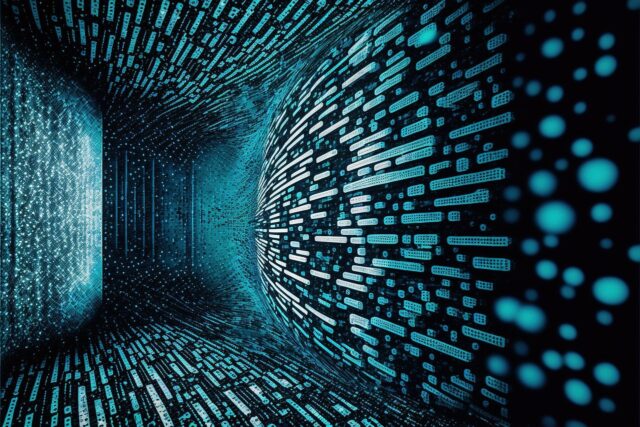We live in a world where digitizing information has become essential. Optical character recognition (OCR) stands out as an essential technology in this process, allowing physical information to be converted into editable and searchable digital formats.
In this article, we’ll explore in depth what OCR is, how it works, its practical applications, advantages, challenges and the future prospects of this technology.
What is Optical Character Recognition (OCR)?
Optical character recognition (OCR) is a technology that allows printed or handwritten text to be scanned and transformed into data that a computer can understand and manipulate. This ability transforms the way we handle physical documents, making it easier to automate processes and manage information.
It is precisely from this technology that we are able to extract data from PDFs or documents, even using artificial intelligence.
Definition of OCR
Optical character recognition, or OCR, refers to the process of converting images of printed or handwritten text into editable text. This is done using software that analyzes the scanned image and recognizes the characters, allowing them to be edited and searched. With OCR, data that would previously have been restricted to physical format becomes accessible in digital format.
History and Evolution of OCR
The development of OCR began in the 1920s, but it was in the 1990s that the technology was consolidated with the digitization of documents and the improvement of recognition methods. The first systems were limited in their accuracy and depended on specific text formats.
As techniques have advanced, especially involving machine learning, OCR has evolved to include a wider variety of fonts and writing styles, increasing its applicability in different contexts.
Conteúdo
How does OCR technology work?
To understand how OCR transforms physical documents into digital data, it is essential to examine the process by which this technology operates. The way OCR works involves several stages, from scanning to converting and interpreting the text.
Document Digitization Process
The first step in the operation of OCR is the digitization of a physical document, which is captured by a scanner. This scanned image is then processed by OCR software, which divides the image into sections, analyses the visual patterns and converts the recognized elements into text. The result is a digital document that can be easily edited and searched.
Algorithms and Machine Learning in OCR
Algorithms are fundamental to the success of OCR, as they are responsible for identifying the characters in scanned images. Machine learning has allowed OCR systems to become more intelligent and adaptable. With exposure to new data, algorithms improve their ability to recognize different fonts and writing styles, increasing recognition accuracy.
OCR varieties (ICR, OMR, etc.)
In addition to standard OCR, there are other types of optical recognition that meet specific needs, such as ICR (Intelligent Character Recognition), which deals with handwriting, and OMR (Optical Mark Recognition), which detects marks on forms. These variations broaden the applications of optical recognition in contexts such as education and forms processing.
Practical applications of OCR
OCR’s applications are vast and impact a variety of sectors, from industrial automation to personal processes. The technology provides effective solutions for capturing and managing data.
Use in Companies and Process Automation
In the corporate environment, OCR is essential for automating processes. Companies that deal with large volumes of documents can easily digitize and store information, allowing for a more efficient workflow and organization. As well as reducing the time spent on manual tasks, OCR also improves data accessibility.
OCR on Mobile Devices and Scanners
With advances in technology, OCR is now available on mobile devices, allowing users to scan documents using their smartphone’s camera. This is particularly useful for professionals in the field. In addition, modern scanners already incorporate OCR technology, making it easier to convert physical documents into digital formats in corporate and personal environments.
Recognition in Specific Contexts (signs, documents, etc.)
OCR also finds application in specific contexts, such as license plate recognition or automated document reading. These features demonstrate how the technology can be adapted to different needs, increasing its usefulness in various sectors, including public security and records management.
Advantages of using OCR
Implementing OCR offers a series of advantages that go beyond simply scanning documents. The benefits provided by this technology have a direct impact on the efficiency of organizational processes.
Efficiency and Time Saving
One of the main advantages of OCR is the efficiency it brings. The time needed to digitize and process information is drastically reduced, allowing employees to devote more time to critical and strategic activities. By automating text recognition, organizations can operate more dynamically.
Improved data organization
With digitization facilitated by OCR, companies experience a significant improvement in data organization. Digitized documents can be easily stored, searched and retrieved, eliminating the difficulties associated with physical archiving and providing quick access to the information needed.
Increased Accuracy in Capture Processes
Advances in OCR technology have resulted in a considerable increase in recognition accuracy. This minimizes the risks of errors during transcription, resulting in more reliable data capture. OCR-driven accuracy can lead to a reduction in operational costs related to corrections and rework.
OCR’s main challenges and limitations
Although OCR has brought numerous advantages, there are also challenges and limitations that need to be considered in its implementation and operation. Understanding these aspects is essential to optimizing the use of the technology.
Common Mistakes and How to Mitigate Them
Among the challenges faced by OCR are recognition errors, which can be caused by poor image quality or variations in fonts. To mitigate these problems, ensuring high-quality scanned images and using up-to-date, well-calibrated OCR software is essential to maximize recognition accuracy.
One of the best options on the market is IDEXA, developed by Pix Force. Click on this link for more information.
Limitations in Different Languages and Sources
Optical character recognition can be limited by the diversity of languages and typographic styles. Although many modern systems support different languages, accuracy can be compromised by unconventional fonts and less common languages. This requires additional training of the models to ensure effective operation in diverse scenarios.
Cost and Need for Model Training
Adopting OCR can involve variable costs, depending on the complexity of the software and infrastructure required. In addition, in order to obtain satisfactory results, it is often necessary to train the models with relevant data sets, which can add a layer of initial cost to the investment. However, the return on investment usually justifies this implementation.
Future of Optical Character Recognition
The future of OCR is promising, with technological innovations underway that could further transform the way we interact with documents. Current trends show an exciting path for the development of this technology.
Technological Innovations and Trends
The continuous evolution of OCR is driven by technological innovations that increase its accuracy and versatility. Future advances are expected to include the ability to handle an even greater diversity of formats and styles, broadening the technology’s applications.
Integration with Artificial Intelligence and Machine Learning
A key trend is the integration of OCR with artificial intelligence and machine learning. This synergy not only promises to improve text recognition, but will also enable contextual analysis of content, enhancing the way data is interpreted. Signs that OCR systems are evolving to become more intelligent are becoming increasingly evident.
Development prospects in the sector
With growing recognition of the value of OCR in business operations, we can expect a significant increase in investment and innovation in the area. It’s not just about improving text capture, but also about expanding the possibilities for visual pattern recognition and automation in business environments.
Conclusion
Optical character recognition (OCR) is a technology that transforms our interactions with documents and data. By understanding its functionalities, applications and challenges, we can appreciate its impact on modern organizations. As technology advances, the possibilities seem endless. Integrating OCR into our routines not only saves time, but also revolutionizes the way we manage information, preparing us for a more digital and efficient future










